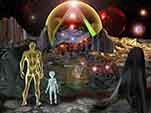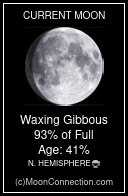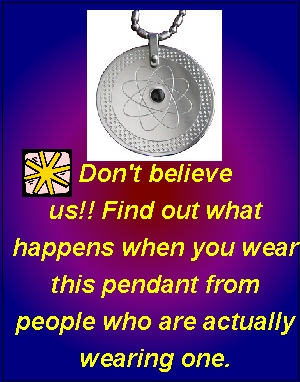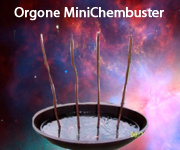NOTE: Look at these NASA Abstracts! Do these not look like the blueprint for chemtrails?!!!
Many more are listed at the following site, including some regarding DNA:
http://www.geocities.com:0080/Area51/9357/nasaexp.html
Title: Multiple instrument studies of chemical releases and heating at Arecibo - Final Report, Jul. 1990 - Sep. 1993
Authors: LIVINGSTON, R. C.; HEINSELMAN, C. J.; VICKREY, J. F.; TSUNODA, R. T.
Published: March 1994
Corporate Source: SRI International Corp., Menlo Park, CA.
NASA Subject Category: GEOPHYSICS
Major Subject Terms: BARIUM ION CLOUDS, CHEMICAL RELEASE MODULES, CRRES (SATELLITE), F REGION, IONOSPHERIC HEATING, MIDLATITUDE ATMOSPHERE, RADIO FREQUENCY HEATING
Minor Subject Terms: BACKSCATTERING, HIGH FREQUENCIES, INCOHERENT SCATTER RADAR, INCOHERENT SCATTERING, IONOSPHERIC PROPAGATION, ROCKET SOUNDING
Abstract:
The Combined Releases and Radiation Effects Satellite (CRRES) Puerto Rico experiments, carried out during June and July 1992, provided an opportunity to observe the dynamics and evolution of high -altitude chemical releases at middle latitudes. Among the experiments that were conducted for the program, three large barium payloads were released into the dawn F region: two into the natural ionosphere and one into an ionosphere modified by HF heating. Extended periods of HF modification prior to the rocket launches also provided an opportunity to study heating effects, per se. This report reviews some preliminary results from three participating instruments: (1) ion-line mapping made by the Arecibo incoherent scatter radar, (2) HF backscatter characterization and tracking of the barium cloud, and (3) transionospheric propagation diagnosis of large and medium scale structure produced by heating and the barium releases. The data that are reviewed are primarily observational and are presented with a minimum of physical interpretation. Recommendations are made for further analysis of much of the data. DTIC
CASI Accession Number: 95N71433 Pages: 00044
Report Number: AD-A293219, PL-TR-94-2119
Contract Number: F19628-90-K-0036
Sales Agency & Price: Avail: CASI HC A03/MF A01
------------------------------------------------------------------------
Title: Observations of ELF fields near the low-altitude CRRES chemical releases
Authors: KOONS, H. C. The Aerospace Corporation, Los Angeles, CA, US; ROEDER, J. L. The Aerospace Corporation, Los Angeles, CA, US
Notes: Journal of Geophysical Research (ISSN 0148-0227), vol. 100, no. A4, April 1, 1995, p. 5801-5809
Published: May 1995
NASA Subject Category: GEOPHYSICS
Major Subject Terms: CHEMICAL RELEASE MODULES, EARTH IONOSPHERE, ELECTRIC FIELDS, EXTREMELY LOW FREQUENCIES, MAGNETIC FIELDS, SPECTRA
Minor Subject Terms: ANTENNAS, CRRES (SATELLITE), FREQUENCY ANALYZERS, LOW ALTITUDE, PREAMPLIFIERS, TIME DEPENDENCE
Abstract:
The Combined Release and Radiation Effects Satellite (CRRES) I performed a series of seven low-altitude chemical releases between September 10, 1990 and August 12, 1991. Immediately following each chemical release, electric and magnetic fields were detected by the extremely low frequency wave analyzer sensors of the Low Altitude Satellite Studies of Ionosphereic Irregularities (LASSII) experiment on the spacecraft. The time series and spectra of the two field component are quite similar for each of the releases but vary in detail from release to release. The index of refraction estimated from the ratio of the magnetic field to the electric field is too small by about 2 orders of magnitude for either the right-hand wave or the extraordinary wave modes which are only propagating electromagnetic modes in the detected band above the O(+) ion gyrofrequency (approximately 30 Hz). ELF hiss observed at higher altitudes is found to be propagating in the extraordoinary wave mode with the correct index of refraction. This confirms that the intensity measurements are being made correctly by the instrument and that an alternative explanation is required for the signals detected follwing the chemical releases. We show that the waves are primarily electrostatic and that the magnitude of the wave magnetic field is consistent with the transverse magnetic field component of ion acoustic waves. Author (Herner)
CASI Accession Number: 95A88055 Pages: 00009
Report Number: HTN-95-20794
Contract Number: F04701-93-C-94
Sales Agency & Price: copyright
------------------------------------------------------------------------
Note: Mission Research conducted the ozone study for HAARP.
Title: Models of ionospheric release experiments. Part 1: SF6 releases. Part 2: CO2 releases - Scientific Report No. 1
Authors: ECCLES, J. V.; ARMSTRONG, RUSSELL A.
Published: August 1991
Corporate Source: Mission Research Corp., Nashua, NH.
NASA Subject Category: GEOPHYSICS
Major Subject Terms: ATMOSPHERIC CHEMISTRY, ATMOSPHERIC MODELS, CARBON DIOXIDE, CHEMICAL REACTIONS, ELECTRODYNAMICS, F REGION, SULFUR FLUORIDES
Minor Subject Terms: AIRGLOW, ELECTRON ATTACHMENT, IONOSPHERIC ELECTRON DENSITY, RADIATION EFFECTS, REACTION KINETICS
Abstract:
High-altitude chemical releases are investigated with the use of several numerical models of chemistry, dynamics, and electrodynamics. The specific releases investigated were SF6 and CO2 in the F-region of the ionosphere. The chemistry for reproducing observations from the CRRES-at-Kwajalein SF6 release must include oxidation reactions of ions and neutrals. The dominant negative ion observed, F(-), was modeled well with SF5(-) + O yields SOF4 + F(-) as the dominant production mechanism. SOF3(-) is potentially an important negative ion resulting from electron attachment of SOF4. The electrodynamic model of the SF6 release did not produce a plasma depletion plume as was hoped. The electrodynamic perturbation is small and short-lived. It will not produce large-scale plume structure associated with equatorial spread-F. The modeling of CO2 releases produced too much 6300A airglow when compared with REDAIR experimental results. The conflict between simulation and experiment requires reduction of CO2 + O(+) reaction rates or inclusion of a CO2 removal mechanism such as freezing. Modeling also shows that the two CO2 releases of the REDAIR experiment may have spatially mixed airglow signatures. DTIC
CASI Accession Number: 93N71246 Pages: 00146
Report Number: AD-A257764, PL-TR-91-2235-PT-1-2, AD-E201243
Contract Number: F19628-90-C-0118
Sales Agency & Price: Avail: CASI HC A07/MF A02
------------------------------------------------------------------------
Title: Mid-latitude ionospheric response to active experiments - Final Report, 1 May 1990 - 30 Apr. 1992
Authors: FOSTER, JOHN C.
Published: 1992
Corporate Source: Massachusetts Inst. of Tech., Westford.
NASA Subject Category: GEOPHYSICS
Major Subject Terms: CHEMICAL REACTIONS, EARTH IONOSPHERE, OZONE DEPLETION, RADAR TRACKING
Minor Subject Terms: AIRGLOW, IONIC REACTIONS, PLASMAS (PHYSICS), TEMPERATE REGIONS
Abstract:
Understanding the ion chemistry and conditions leading to the formation of ionospheric depletions (ionospheric holes) was an important objective of the NASA active ionospheric experiment program. Millstone Hill radar observations were used to monitor the magnitude and temporal extent of the plasma holes produced under varying conditions. The major objective of the completed project was to provide radar diagnostic support for individual NASA rocket campaigns flown from Wallops Island. Two rocket programs, NICARE and REDAIR 2, were selected by NASA for radar support during the proposal period and pre-launch and in-flight radar observations were provided for each as well as basic reduction of the acquired data for scientific analysis. Radar operations and analysis for both of these experiments were performed as proposed and the work on these projects at M.I.T. was completed. Author (revised)
CASI Accession Number: 94N12583 Pages: 00005
Report Number: NASA-CR-193549, NAS 1.26:193549
Contract Number: NAG5-669
Sales Agency & Price: Avail: CASI HC A01/MF A01
------------------------------------------------------------------------
Title: The electrical discharge initiation of chemical reactants in pulse HF Chemical laser systems - Final Scientific Report, Jun. 1972 - Jun. 1973
Authors: PAULSON, R. F.
Published: February 1974
Corporate Source: Aerospace Research Labs., Wright-Patterson AFB, OH.
NASA Subject Category: SPACE TRANSPORTATION
Major Subject Terms: CHEMICAL REACTIONS, ELECTRIC DISCHARGES, EXCITATION, HF LASERS
Minor Subject Terms: CHEMICAL LASERS, HYDROFLUORIC ACID, PULSED LASERS, QUANTUM ELECTRODYNAMICS, REACTION KINETICS
Abstract:
The results of a numerical simulation of the electrical discharge initiation by a pin discharge of an SF6:H2 reaction in a pulse HF laser system are given. A parameter variation of the amplitude and the temporal length and shape of the electrical discharge pulse is made. The resulting chemical reactions are simulated by the rate equation method for a reaction in a reaction cell, a laser cavity, and a laser amplifier. The effect of spatial inhomogeneity of the chemical reaction in a laser amplifier is considered. A pin electrical discharge laser system used in the initial experimental studies of the initiation of chemical reactions is described. Typical laser output pulses for the system are shown for SF6:H2:He reactants. Author (GRA)
CASI Accession Number: 74N28978 Pages: 00063
Report Number: AD-778446, ARL-74-0011
Contract Number: none
Sales Agency & Price: Avail: CASI HC A04/MF A01
------------------------------------------------------------------------
Title: Chemical research projects office: An overview and bibliography, 1975-1980
Authors: KOURTIDES, D. A.; HEIMBUCH, A. H.; PARKER, J. A.
Published: August 1980
Corporate Source: National Aeronautics and Space Administration. Ames Research Center, Moffett Field, CA.
NASA Subject Category: CHEMISTRY AND MATERIALS
Major Subject Terms: BIBLIOGRAPHIES, FIRE PREVENTION, POLYMER CHEMISTRY, POLYMER PHYSICS, RESEARCH AND DEVELOPMENT
Minor Subject Terms: AIRCRAFT SAFETY, CHEMICAL ENGINEERING, COMPOSITE MATERIALS, PHYSICAL CHEMISTRY
Abstract:
The activities of the Chemical Research Projects Office at Ames Research Center, Moffett Field, California are reported. The office conducts basic and applied research in the fields of polymer chemistry, computational chemistry, polymer physics, and physical and organic chemistry. It works to identify the chemical research and technology required for solutions to problems of national urgency, synchronous with the aeronautic and space effort. It conducts interdisciplinary research on chemical problems, mainly in areas of macromolecular science and fire research. The office also acts as liaison with the engineering community and assures that relevant technology is made available to other NASA centers, agencies, and industry. Recent accomplishments are listed in this report. Activities of the three research groups, Polymer Research, Aircraft Operating and Safety, and Engineering Testing, are summarized. A complete bibliography which lists all Chemical Research Projects Office publications, contracts, grants, patents, and presentations from 1975 to 1980 is included. L.F.M.
CASI Accession Number: 80N31473 Pages: 00036
Report Number: NASA-TM-81227, A-8317
Contract Number: RTOP 534-05-11
Sales Agency & Price: Avail: CASI HC A03/MF A01






































